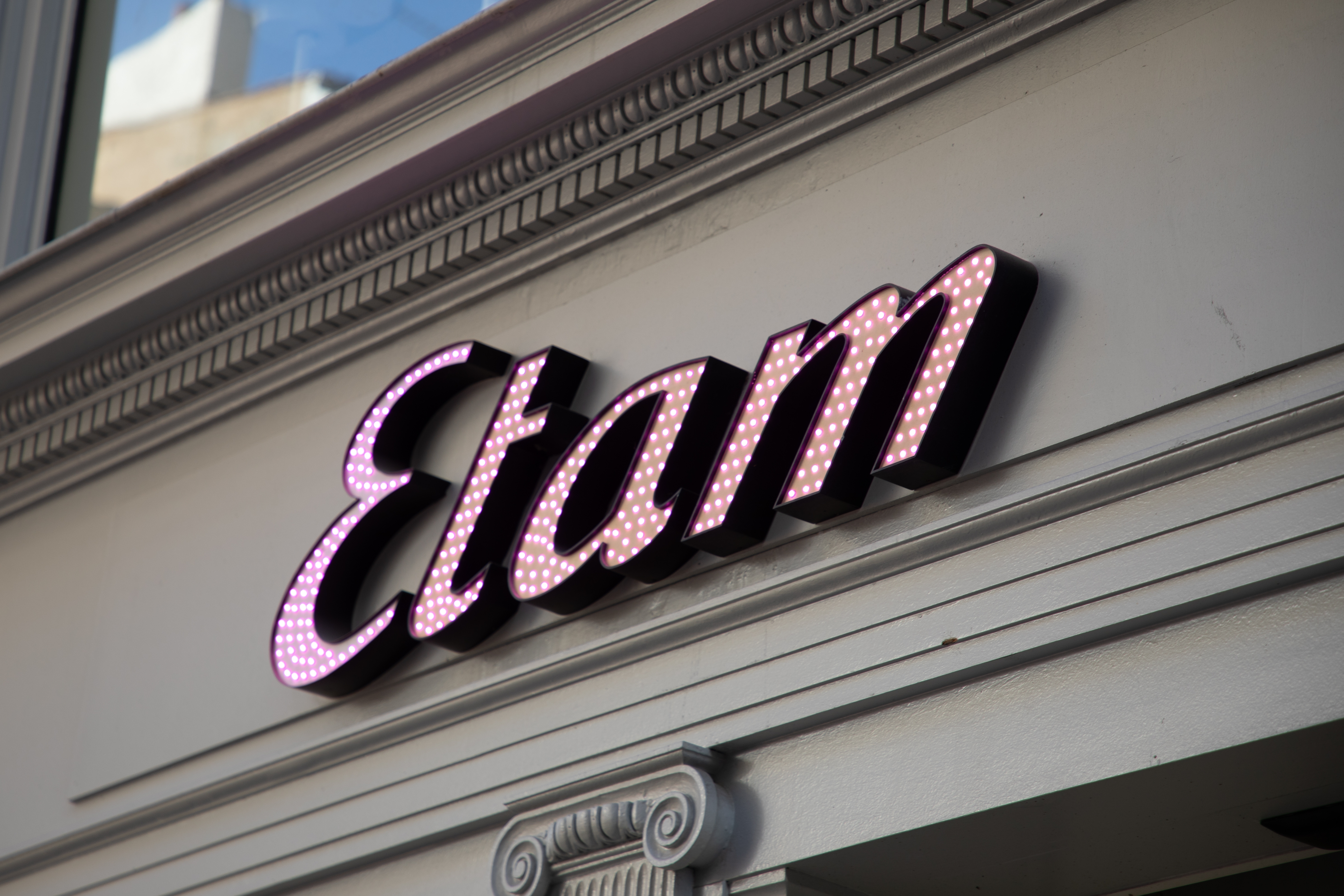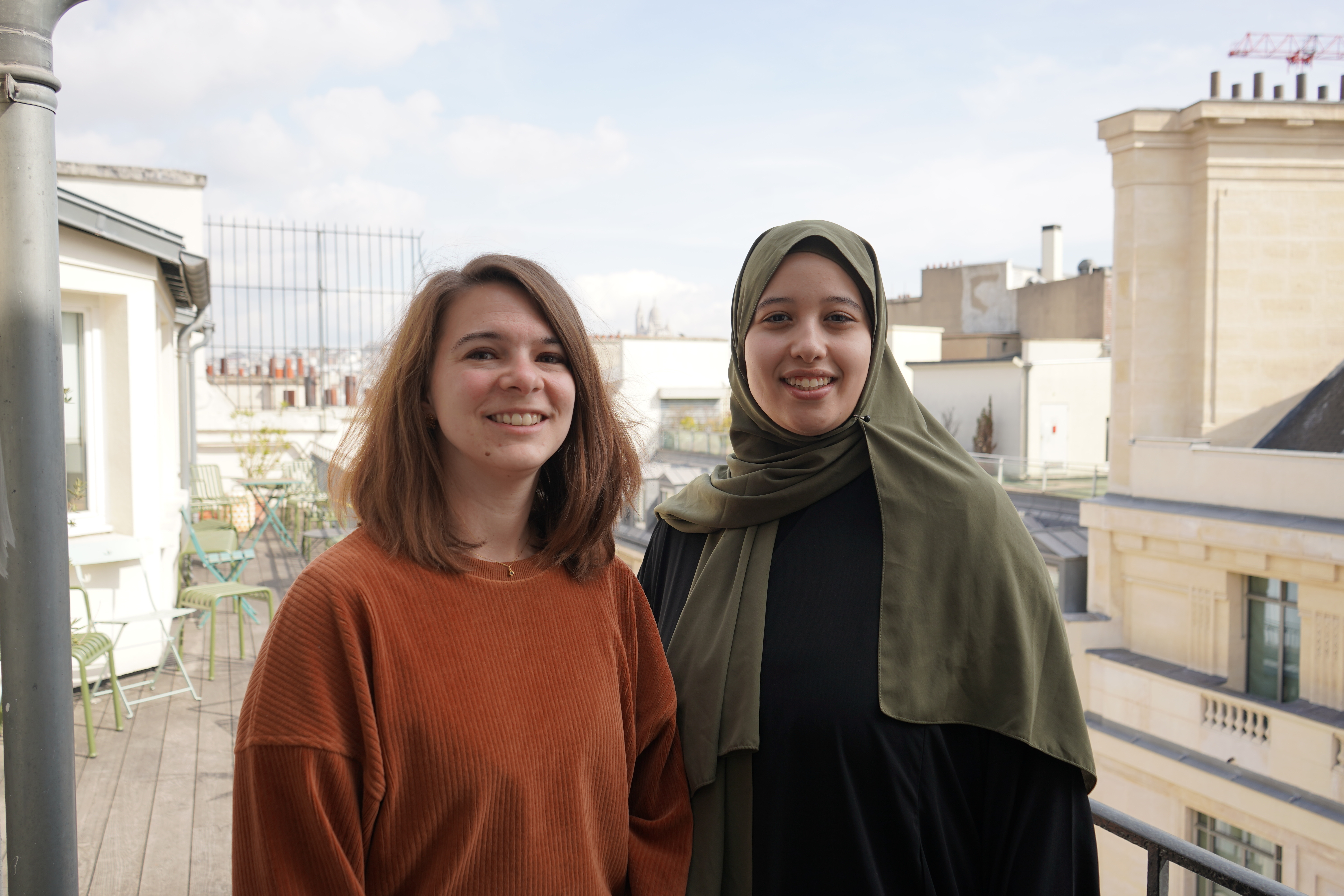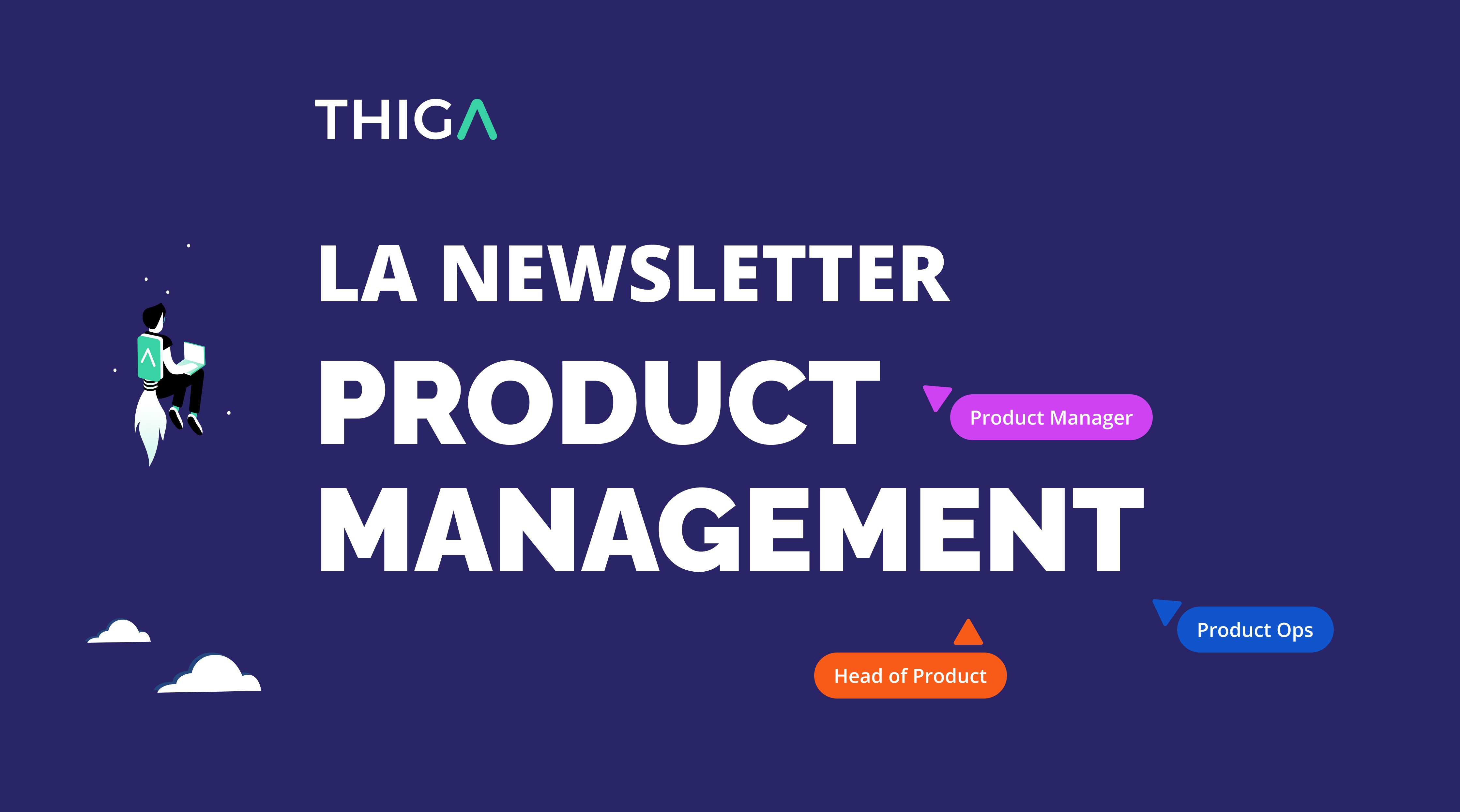Today, 68% of the French prefer digital, leaving newspapers for information just a click away. To stay in the race, media outlets must therefore boost their digital offerings. And what better than an app updated to contemporary tastes to attract the audience? Here are some insights from our Product Manager consultants: Camille Combes for L’Express and Julie Crépet for Brut.
November 23, 2023. The new L’Express app is available on download platforms after a year of hard work. This is a significant moment for both the Product team and the journalists, as the app aims to achieve the weekly magazine’s retention goals. "Other media such as L'Équipe or Le Parisien use their app primarily for acquisition because they are dailies and they target a much broader audience", shares Anna Sillard, L’Express Product Director. "For us, the app is the number one tool for retention and loyalty. The idea is to offer a product that is very satisfying for our subscribers, rather than trying to attract new ones."
The app: the pinnacle of engagement in media
In 2024, focusing efforts on improving digital platforms seems obvious in the media sector. According to the ACPM (Alliance for Press and Media Data), 68% of French people favor digital media. But why focus on the app rather than the website?
"The context is very challenging for the media, with everyone trying to find the magical solution that will suddenly cause people to have an epiphany and sign up for 14 different subscriptions ! The reality is that people think twice before paying to access information, and the app can be a good differentiating factor”, analyzes Anna Sillard. "It allows us to offer an experience that is both more immersive and more complete", she continues. "The reader won't need to reconnect because the cookies have expired on their browser. There are so many constraints on the web that make the experience less than ideal... Media outlets would do well to offer an app that allows, once logged in, to get informed without any hassle."
Julie Crépet, a Product Manager (PM) at Thiga who was on a mission at Brut at the time the pure player wanted to regroup its three applications (Brut., BrutX, and Brut.Live) into one, shares her analysis : "There’s a very immediate aspect inherent to media. We consume it throughout the day; information must always be available, and the app is the best way to ensure this", Julie confides. "If you have to go to your browser, type ‘Brut’, search the content you’re interested in and, on top of that, some pages are slow, your experience is degraded. Whereas an app meets the challenge of immediacy if it’s well-designed : you open it and bam, you have the sorted news! The challenge of immediacy may seem even more critical for a pure player like Brut, which doesn’t have a physical version to rely on."
This is why press groups have embarked on projects to overhaul their applications. However, as Julie Crépet underlines, these apps must be "well-thought-out" and require one to take a step back to understand why a redesign is necessary. For Anna Sillard, "the starting point for a redesign should be an assessment. It is conceivable in the case of a significant change in editorial direction, for example. The recent redesign of L’Express", explained by the Product Director, "was due to an application that had become obsolete: we could no longer evolve it; we couldn't add a search bar to find articles, for example. A pity, since that's a key feature for a media outlet...The only solution that was considered viable was therefore to completely redo it while mastering the ins and outs of each technical structure."
A choice that makes sense to Julie Crépet: "At Brut, we decided to work from Brut.Live, as it was the most recent app. We wanted to rebuild and increment rather than starting over. However, in cases with a lot of technical debt, I’m not sure if it wouldn’t be better to start from scratch." If this decision is feasible, it is necessary to carefully weigh the pros and cons given the magnitude of the task. "A bad reason for a redesign would be to follow vanity metrics or want to make the coolest app," warns Anna Sillard. "Simply changing the application won’t suddenly make people subscribe."
Content before form
That's the challenge for the media: to encourage readers to subscribe and to convince those who are already subscribers to stay. And in this sector, it primarily comes down to the quality of the content offered, rather than that of the platform. This is the conclusion reached by Camille Combes, the Thiga Product Manager who was entrusted with the famous redesign of the L’Express app.
Unlike other apps, the L’Express one serves content first. This is something inherent to the media sector.
When she arrived in October 2023, it had been three years since all acquisition campaigns related to the app had been cut off. Deemed obsolete, it was no longer active. Yet, a core group of subscribers continues to use it. Camille Combes observes: "Unlike other apps, the L’Express one serves content first. This is something inherent to the media sector", the PM analyzes. "As long as the content expected by the subscribers is delivered and their experience with the app isn’t too painful, they will continue to use it. Conversely, you can create amazing features but they will always be dependent on the media’s content." Anna Sillard confirms this view: "A user will want a high-performing app, but we are focused on a very limited set of essential features. Anything we can do beyond that is almost secondary."
Julie Crépet agrees on the critical aspect of content. The PM, who previously worked at Brut, however, adds a nuance. "In the case of print media, you can continue reading, even if it’s not very functional. In the case of video, if it doesn’t work, people stop watching. You need to have a performant player." This nuance also seems relevant regarding the radio format.
Whatever the format or platform, Product teams must deal with the specifics of the media world (and their editorial teams). And it's sometimes this meeting of two worlds that can generate misunderstandings, or even hinder the work of the Product teams, as Julie Crépet points out. "On the business side, some didn’t quite understand my work. To them, I was just the one who had to develop stuff for marketing", she recounts, laughing. "Guillaume Lacroix, CEO of Brut, told us that it was a bit of a culture shock. On one side, the culture of immediacy—if something doesn’t work in the morning, you make sure it’s fixed by evening; on the other, Product teams that need development time, operate in 15-day sprints... It’s a real challenge for a media wanting to establish a Product culture: you have to manage to coexist two different temporalities, and it’s not easy", she concludes.
For this cohabitation to be effective, it must be seen as something permanent, not temporary. Camille Combes insists: "When you work on a project limited in time like this, it's vital not to lose sight of the final goal: to maintain an editorial product. Thanks to the redesign, we were able to raise awareness about the Product culture by involving the editorial team at all stages. The important thing is that this collaboration lasts."
Despite the smiles of the Product Manager, now on a mission at Radio France, you can tell she’s feeling a twinge as she looks at the fruit of her labor: "It was hard to leave my little baby behind. I feel like I created a product that has all the bases, which the teams have been able to own and from which they will be able to iterate. The redesign also allowed us to implement more precise tagging. We already see that some features have convinced: for example, readers listened to L’Express longer, thanks to the audio lists. It’s the first version, the essential thing now is to take care of it!" Because at the end of the day, to use the baby metaphor, apps are like children. It’s one thing to make them, but then you have to take care of them. And both parents and Product Managers will tell you that’s probably the best part.
How L'Express redesigned its app in 12 months
An interview with Camille Combes, Product Manager
During the fall of 2022, you had been at L'Express for 3 months and you were then given 12 months to successfully carry out the app redesign project. Can you tell us about it?
Camille Combes: When the Product Director at L'Express entrusted me with the project, the idea was to move from two different apps—one for iOS and one for Android—to a single one coded in Flutter. The advantage of this Google technology is that it allows for developing a common code for multiple operating systems. Ideally, this means no longer having to develop the same app in two different languages. In reality, it requires rewriting the app from scratch in a brand new language. So, there is a certain cost of investment involved. At that point, the project details were still vague. The choice to do a complete overhaul in Flutter was final.
How do you approach such a significant project?
I put on my Thiga consultant hat and start questioning! Redoing an app is risky, even very risky, especially using a technology that no one within the media masters yet. The goal isn't to change the stakeholders' minds, but to understand all the reasons that led them to this choice and to highlight the ensuing risks. There are many bad reasons to redo an app from scratch. In this case, L'Express had very good ones, especially the overly indebted code.
Eventually, this redesign, and the choice of Flutter in particular, were very good bets. It's a flexible technology, which allows us to see improvements very quickly and to iterate. Internally, the developers got trained and took control of the app quite fast. Not to mention that the prospect of working on such technology can help attract new devs.
Beyond a technical overhaul, was a design overhaul also expected?
Absolutely! It's an amazing project when you're a PM, but it also requires taking precautions. So we started by assessing the strengths and weaknesses of the existing app, which mainly suffered from having been neglected. Apart from classic editorial pushes, it hadn't been animated or promoted for several years. Realizing this allowed us to save time and have more realistic expectations, while leaving us a lot of room for discovery!
As with any new product, there are a lot of elements to consider when renewing an application. What seems crucial to you to successfully carry out a redesign?
Prioritization! At L'Express, we had a lot of ideas. On paper, that's great. But we couldn’t do everything, due to lack of time and the risk of creating a cluttered and incoherent product. Right from the start, we agreed that it was primarily a tool for loyalty. This allowed us to deprioritize topics strictly related to the acquisition of new subscribers, even though it’s obviously possible to subscribe within the app.
How do you prioritize features?
First, by prioritizing the needs of target users... In our case, of subscribed readers convinced by the editorial line of L'Express, more or less comfortable with digital. We therefore choose to include subscribers who still prefer the print version of the newspaper in the equation, while wanting to appeal to regular online press users. From their needs arose the app's key features: streamlined homepage based on an editorial selection, news feed, search by themes and keywords, access to the weekly magazine in PDF and audio versions...
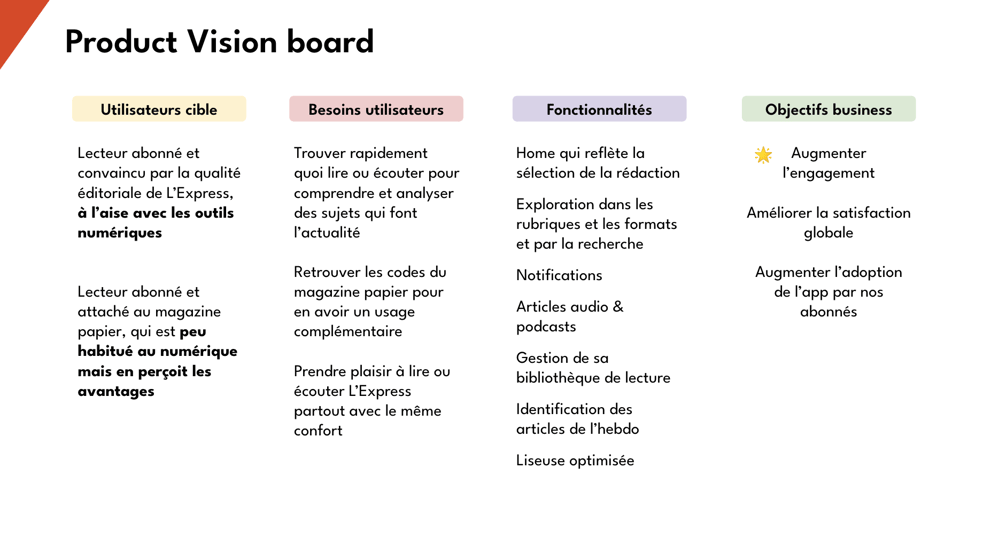
First version of the Product Vision Board for the new L’Express app, created in January 2023. This Thiga tool, available in our Product Management Toolkit, is used to clarify the Product Vision with a user column, one with their needs, one with the features to address these needs, and one with the associated objectives.
With hindsight, my most important decision was to insist on taking a month to frame the project before launching into prototypes. It sounds simple, but it wasn’t: the deadline was very tight! I therefore took the time to call subscribers to understand their needs better, and create personas. Based on this survey, the goals of L'Express, and the statistical data we had access to (which I had expanded through a survey of our readers), we were able to deliver a coherent, ambitious, and realistic Product Vision. We refined it later, but it was crucial when it came time to prioritize and align stakeholders throughout the project.
A common flaw in many media apps is trying to do too much. What I love is that we took all the positive points of the magazine while trying to recreate that experience and removing the friction points inherent in a media app. When the app was released, some journalists at L'Express told me they found it elegant, streamlined, and that it had only what they needed. Unknowingly, they had used all the keywords.
What feature are you most proud of?
Ah, that’s a tough question... I am quite proud of the choices we made regarding the front page, which is the entry point into the app. It is structured into several content blocks. For this, we worked hand in hand with the editorial team to find a happy medium between highlighting their editorial work and automating certain default blocks to save them time. It's the best example of this "base destined to evolve" that I was talking about: we made it as flexible as possible to adapt to editorial needs. Afterward, we can imagine endless other blocks! And always working with the audience, subscription, and editorial teams.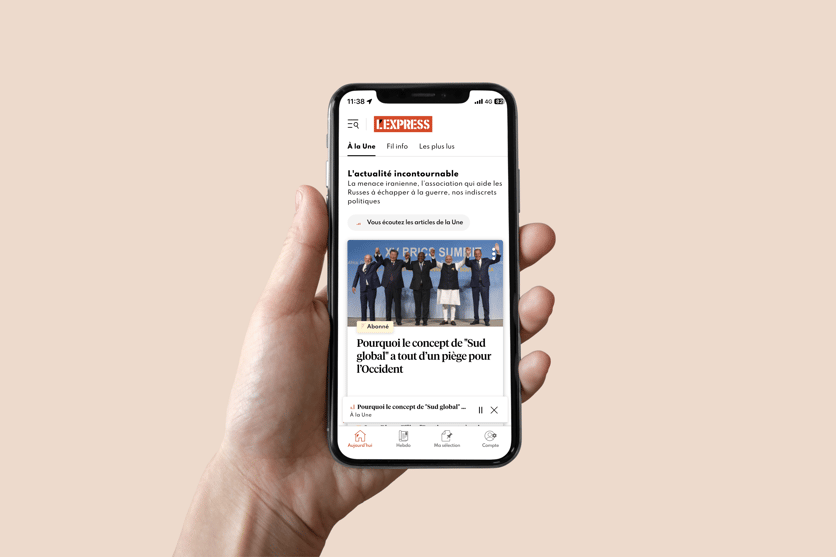
This also forms part of a set of features that meet the same need: that every reader who opens the app finds something of value and gets informed with L'Express. I think we really held up our end of the bargain by maintaining coherence while satisfying different habits. Heavy news consumers can turn to the news feed or the search function, while those in a hurry can start the audio playback of the entire front page.
To learn more: download our Product Management Toolkit
